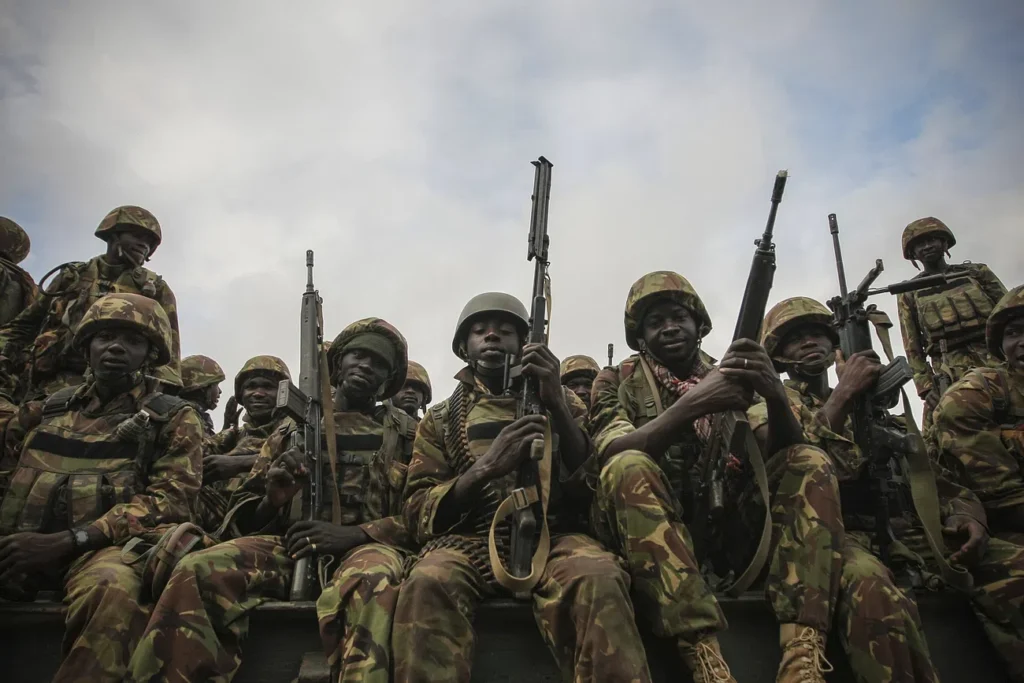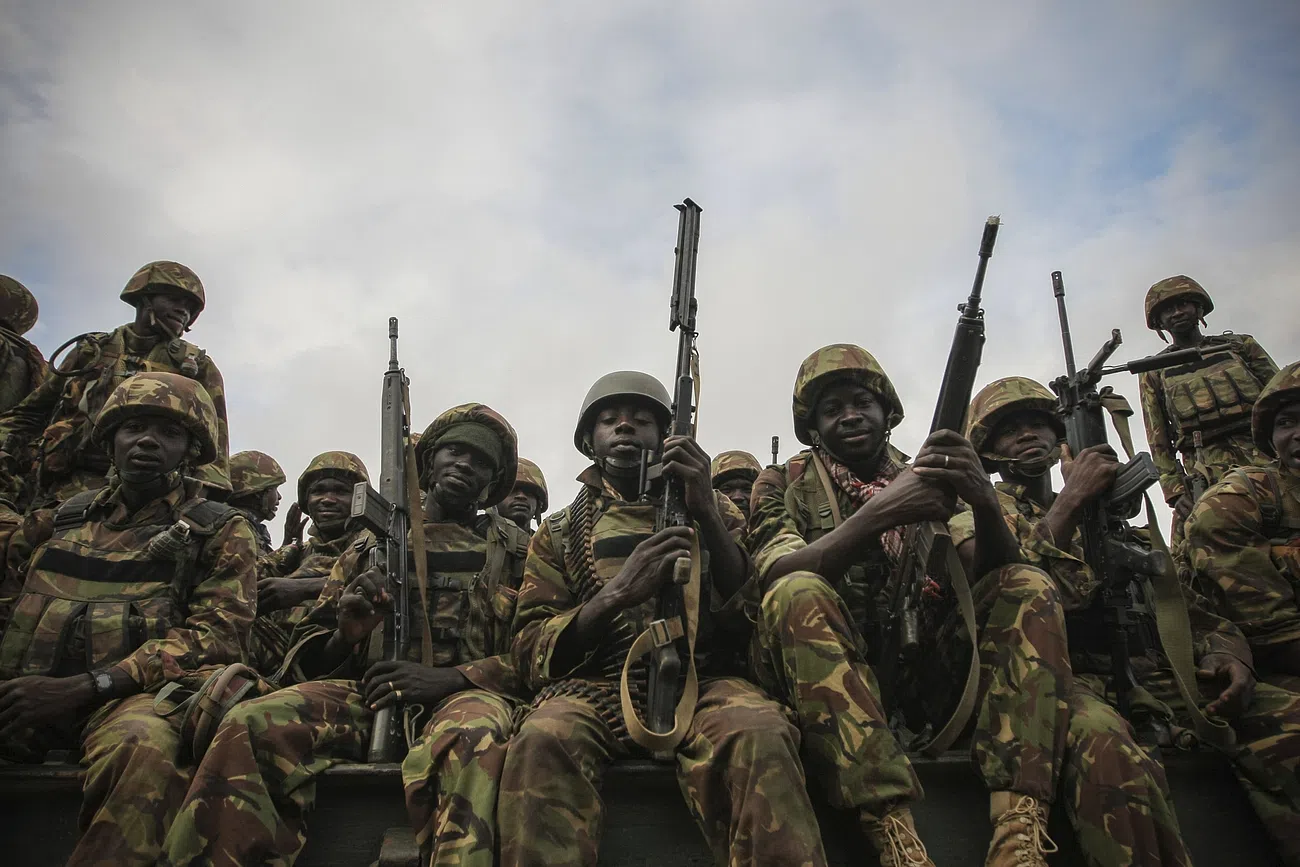Author: Esther Brito - Human Security Team
Darfur is once again experiencing a terrible crisis that, according to many international experts and organisations, has all the characteristics to be considered as genocide - or perhaps, it has always been.
The country of Sudan has faced multiple severe episodes of war and what can be classified as genocide in its recent history; including the First Sudanese Civil War (1955 to 1972), the Second Sudanese Civil War (1983 to 2005), the 1990’s genocide in the Nuba Mountains, and the 2000’s escalation risk of genocide in Darfur – which has, arguably, seen a continuation at a lower intensity over the last two decades. More recently, in April 2023, violence erupted in the capital, Khartoum, and soon expanded throughout the country as the Sudanese Armed Forces (SAF) clashed with the Rapid Support Forces (RSF) paramilitary group.
The current escalation of violence can be directly traced to the impacts of the Second Sudanese Civil War and the subsequent non-resolution of the Darfur genocide. During the second civil war, while the central government in Khartoum was engaged in armed conflict with the Sudan People’s Liberation Army – a clash which would give way to the creation of the world’s newest state – a combined breakdown of fundamental aspects of human security and the cumulative displeasure with structural inequality would precipitate the war in Darfur. Mainly, the onset of violence in Darfur was triggered by: 1) disputes regarding land and resource use that became identified with ethnicity, further exacerbated by climate change; 2) perceptions of unequal political power and preferential access, and 3) the uncertainties driven by the nation’s ongoing civil war.
The Genocide in Darfur
As noted, the social cleavages affecting the conflict in Darfur are related to a complex opposition based on decaying access to vital resources and unequal power representation in the state. Indeed, tensions rose in tandem with national policies seen as supporting Arab dominance in the region, at the cost of agency and representation for black Africans. With the presence of Chadian rebels in Darfur throughout the 1970s and 1980s facilitating access to weapons for both local Arab and African groups, and the embracing of these rebels of Arab supremacist ideology, perceptions of mutual risk increased progressively. This social suspicion was both often the result of and reinforced by local resource competition and tensions derived from scarcity. In fact, Darfur has been referred to as the “first climate change conflict”.
These points of contention exploded in 2003, when two Darfuri rebel groups – the Sudan Liberation Movement (SLM) and the Justice and Equality Movement (JEM) – accused the central government of the marginalization and dispossession of non-Arab groups in Darfur; launching an attack against a government post in the region. Contending with the threat of a massive territorial secession in the South and fearing similar claims in the West, the Sudanese government funded and armed Arab local militia groups, known as the Janjaweed, as proxy forces to push back against the rebels and deter any further social support through the targeting of African groups in mass atrocities – including mass killings, torture, sexual violence, and mass displacement – as part of a scorched earth campaign. Estimates suggest that between 140,000 and 400,000 people were killed as a result. This instance would lead the International Criminal Court to sign an arrest warrant for President Omar al-Bashir in 2009 for crimes including genocide – a controversial response at the time as the first indictment of a sitting president.
Past the genocide’s peak, the dynamics and actors built up during the initial war in Darfur have served to drive significant political developments in Sudan – such as the 2019 coup that deposed al-Bashir, the 2021 coup that ended civilian governance, and notably the renewed violence in 2023. This situates both the 2003 and 2023 conflicts as inherently interrelated, demanding aligned analysis and responses.

The role of non-resolution and what might follow
While the intensity of the violence in Darfur lessened under international pressure in 2005 and with the entry of UNMIS until 2011, the genocide did not truly end – with continued forms of both direct and structural targeting, and the maintenance of a situation of ethnically defined mass displacement for two decades. This semi-permanent mass displacement not only endures today, but has continued to worsen as a result of the recent escalation.
It is the lack of comprehensive accountability for the genocide, as well as the non-transformation of power structures and drivers of conflict, that has led directly into the current war. In fact, the RSF formally emerged in 2013 from the consolidation and reorganization of Janjaweed militias, for the purpose of more effectively continuing repression operations and mass violence in Darfur. The 2023 eruption of violence in the capital was triggered due to disagreements between the SAF and the RSF, which had priorly been aligned in their operations in Darfur, and further orchestrated both the 2019 and 2021 coups. As such, the actors, power relationships, and immunity that defined the genocide in Darfur have become the core triggers of the current war, which has not only affected the capital and its surrounding areas, but heightened the intensity of genocide in Darfur as well.
At the moment, a number of potential scenarios can lead to the further escalation of the Sudanese conflict. Among them, perhaps the most prominent are the following: 1) the entry of international backers into the conflict, either directly or indirectly; 2) the establishment of only partial negotiations with a focus on Khartoum – thus excluding Darfur –; and 3) the further regression of international aid and attention, favoring further atrocities or another iteration of unresolved stalemates – which leave those displaced in a state of extreme vulnerability, enabling further cycles of communal violence. Given that Sudan shares borders with South Sudan, Egypt, Libya, Chad, the Central African Republic, Ethiopia and Eritrea, the potential for spillover risks exacerbating or even precipitating a number of regional conflicts cannot be overstated.
However, there are also windows of opportunity for conflict mitigation. The death of RSF leader Mohamad Hamdan “Hemedti” Dagalo could lead to an organizational breakdown within the group, making it more likely to put down its weapons in favor of amnesty and a renewed integration process into the SAF. Another possible avenue can come from the involvement of regional institutions, such as the African Union (AU). While AU engagement has not traditionally been well received by the government of Sudan, there is a potential for entry in helping to manage the growing refugee crisis that can then be expanded into a role in negotiation and DDR across the country. This is of course dependent on a significant level of international aid and institutional commitment from the AU, as well as a change in positioning from the SAF, which would need to be motivated by the inability of the government to navigate the mass displacement that has followed the violence both nationally and in Darfur. Given that this latest episode has led 3.8 million people to flee, with around 7.1 million people now being internally displaced, this may be a necessary concession from the SAF – particularly as humanitarian needs continue to rise exponentially, with 24.7 million people currently in urgent need of humanitarian assistance and protection. However, this will not be an easy endeavor, as there has been a cessation of relief operations in parts of the country – including areas in West Darfur – as a result of targeted attacks on humanitarian aid workers and property.
The cost of avoidance
The current conflict in Sudan is a result in great part of the lack of attention and resolution afforded to the war and genocide in Darfur. The RSF is a direct consequence of the Janjaweed’s impunity, and as the situation deteriorates, we are at risk of once again seeing the international community settle for only a cosmetic resolution of the hostilities in Khartoum and a continuation of the attritional genocide in Darfur. The genocide convention explicitly notes that in the absence of prevention and prosecution of genocidal violence, further war will follow. What we see in Sudan is the physical manifestation of that warning; where international response waned as atrocities became more low-intensity and institutionalized in nature, failing to address the continued targeting of Darfuri civilians and the parallel strengthening of the RSF into what it is now. Currently, as atrocities increase in intensity again – to a scale comparable to the beginnings of the last-high intensity campaign in Darfur – it is important that patterns of conflict resolution follow a different trajectory.
The views and opinions expressed are exclusively those of the author or authors and do not necessarily reflect those of the association.

No comments.